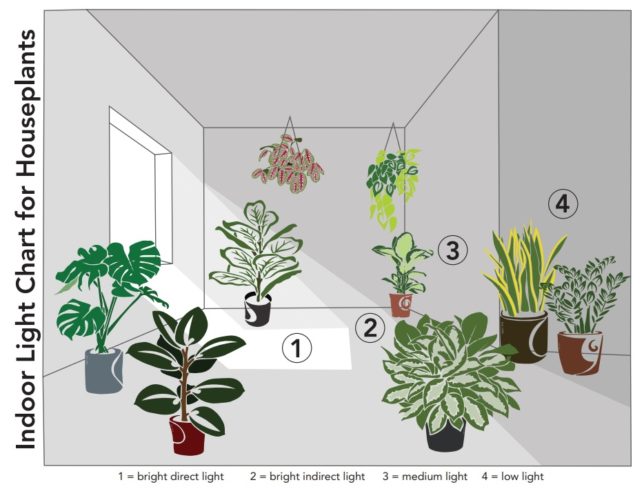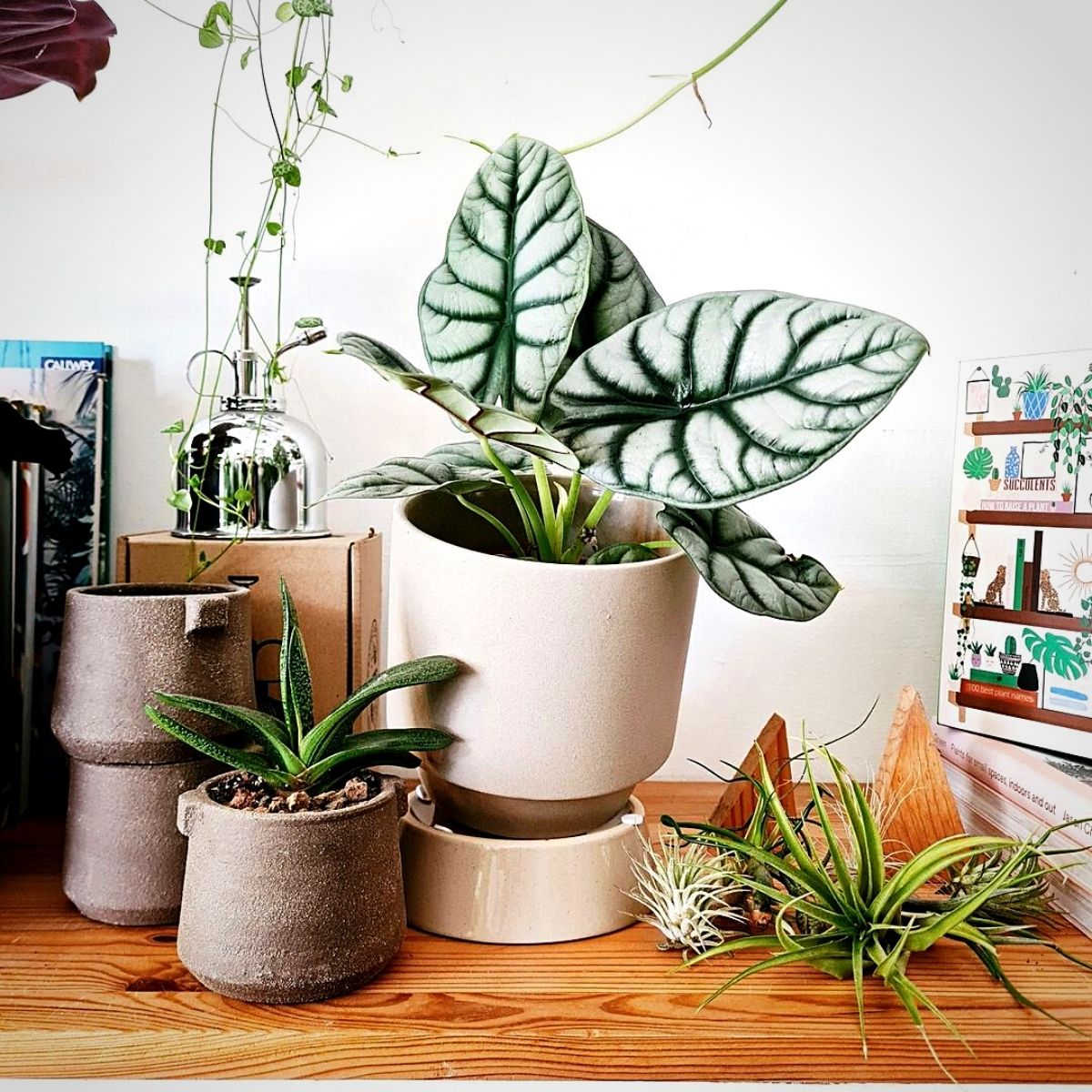Best Low-Light Indoor Plants for Those with Limited Natural Light in Their Homes
Best Low-Light Indoor Plants for Those with Limited Natural Light in Their Homes
Blog Article
Discover the Tricks of Low-Light Indoor Plants and Just How They Boost Your Setting
Low-light interior plants have garnered increasing focus for their special capability to enhance both visual appeal and ecological top quality within work environments and homes. These resilient types, including the Serpent Plant and Tranquility Lily, not only grow in tough illumination conditions yet additionally play a pivotal duty in air purification and psychological wellness.
Benefits of Low-Light Indoor Plants
Although many individuals presume that indoor plants call for plentiful sunlight to prosper, low-light indoor plants offer a wide range of advantages that make them suitable for different settings. One of the key benefits is their adaptability; they can flourish precede with restricted all-natural light, such as offices, cellars, or rooms with tiny windows. This function permits individuals to boost their surroundings with greenery, adding to enhanced appearances without the requirement for extensive lights adjustments.
Additionally, low-light interior plants can considerably boost interior air quality by launching and filtering system harmful toxic substances oxygen, making living rooms healthier. Study has shown that specific ranges can soak up toxins, thus promoting a cleaner atmosphere. Furthermore, they can improve psychological health by reducing tension and boosting performance. The presence of plants has been linked to higher feelings of serenity and emphasis.
Moreover, low-light plants commonly need less maintenance than their sun-loving equivalents, making them ideal for active people or those brand-new to horticulture. Their strength permits them to grow with marginal treatment, hence providing a satisfying experience for plant lovers and amateurs alike. In recap, low-light interior plants serve both useful and aesthetic objectives, making them beneficial additions to any room.
Top Low-Light Plant Varieties
Low-light indoor plants come in a range of types, each offering special qualities and benefits matched for dim environments. Among the most popular selections is the Serpent Plant (Sansevieria), known for its architectural fallen leaves and air-purifying abilities. This durable plant prospers on neglect and can endure a broad range of light problems.
One more superb option is the ZZ Plant (Zamioculcas zamiifolia), which features glossy, dark eco-friendly leaves and is extremely drought-tolerant. Its adaptability makes it a preferred for workplaces and homes with limited sunshine.
The Pothos (Epipremnum aureum) is also a leading challenger, with its trailing vines and heart-shaped fallen leaves - Best low-light indoor plants. This versatile plant can be educated to climb up or waterfall, adding visual interest to any type of space
:max_bytes(150000):strip_icc()/eight-houseplants-that-thrive-in-low-light-3-0922-2000-6f95610b936648ce84ebb498a9b6d704.jpg)
Treatment Tips for Low-Light Plants
Looking after low-light indoor plants requires a nuanced understanding of their specific requirements to ensure optimum growth and vigor. Initially, it is vital to pick the best potting mix, as a well-draining soil is essential to avoid origin rot. A mix developed for houseplants, usually having peat moss and perlite, works well for the majority of low-light ranges.
Watering is an additional essential element of treatment. Low-light plants typically need much less frequent watering contrasted to their sun-loving equivalents. It is recommended to inspect the leading inch of soil; if it feels completely dry, it's time to water. Overwatering can lead to issues such as mold and mildew and root degeneration.
Fertilization ought to be come close to with care. During the growing period, a diluted liquid fertilizer can be used monthly, yet in cold weather, many low-light plants enter dormancy and require little to no fertilization.
Finally, it is necessary to occasionally cleanse the fallen leaves to get rid of dirt, permitting for far better light absorption. By sticking to these treatment pointers, you can grow a thriving environment for your low-light indoor plants, enhancing both their look and long life.
Enhancing Air Top Quality With Plants
Interior plants play a substantial function in improving air high quality within homes and office why not check here spaces. Through the process of photosynthesis, these plants soak up co2 and launch oxygen, contributing to a healthier atmosphere. Additionally, certain low-light interior plants have the capability to filter harmful pollutants, such as trichloroethylene, benzene, and formaldehyde, which are commonly located in interior atmospheres.

Furthermore, the existence of indoor plants can increase moisture degrees, which assists ease completely dry skin and breathing problems, even more boosting general wellness. This ability to enhance air quality not just promotes physical health and wellness but additionally sustains mental wellness.
Including low-light interior plants into your living and working rooms can cause a much more stimulating and dynamic Continued environment (Best low-light indoor plants). Spending in these natural air purifiers is a straightforward yet reliable technique for enhancing interior air high quality and fostering a much healthier way of life
Developing a Tranquil Indoor Space
The assimilation of plants into living spaces not just enhances air top quality however additionally adds to a tranquil ambience. Low-light indoor plants, such as serpent plants and pothos, are particularly reliable in producing a serene environment, as they flourish in problems that may or else be unwelcoming for other plant. Their lavish foliage provides a soothing visual, lowering stress and advertising leisure.
Incorporating these plants into your office or home can stimulate a feeling of peace and health. Strategically putting them in locations where you invest considerable time, such as living areas or work spaces, allows for an immersive experience with nature, which has actually been shown to boost state of mind and cognitive function.
Furthermore, the gentle activity of leaves in feedback to air movement can produce a vibrant aesthetic aspect that improves the total ambiance. Take into consideration using a selection of plant heights and structures to include depth and interest to your area. With thoughtful positioning and treatment, low-light interior plants can change any type of area right into a peaceful haven, fostering not just visual fulfillment yet emotional and additionally emotional wellness.

Conclusion
Incorporating low-light interior plants into various environments yields substantial advantages, consisting of enhanced air top quality and improved visual charm. The transformative power of low-light plants emphasizes their worth in boosting both occupational and domestic settings.
Although many individuals think that interior plants require abundant sunshine to thrive, low-light indoor plants supply a plethora of advantages that make them suitable for various atmospheres.Moreover, low-light interior plants can substantially improve interior air top quality by filtering check out this site dangerous contaminants and launching oxygen, making living rooms healthier. Furthermore, specific low-light indoor plants have the capability to filter dangerous contaminants, such as formaldehyde, trichloroethylene, and benzene, which are typically discovered in interior atmospheres.
Low-light interior plants, such as snake plants and pothos, are especially reliable in creating a tranquil environment, as they flourish in problems that may otherwise be unwelcoming for various other plant.Integrating low-light indoor plants into various environments returns considerable benefits, consisting of improved air top quality and improved aesthetic allure.
Report this page